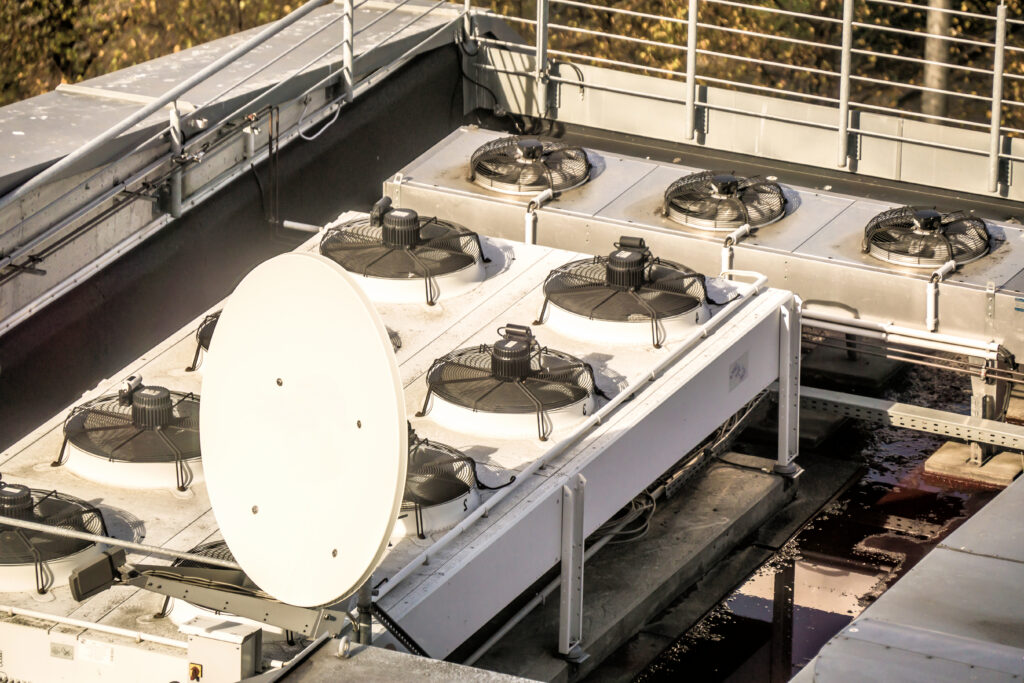Picking the Best HVAC Specialist for Your Commercial HVAC

Commercial HVAC systems, an abbreviation for commercial heating, ventilation, and air conditioning systems, play an indispensable role within the sphere of providing a controlled and comfortable indoor environment for a wide array of business types, from small boutiques to sprawling corporate complexes. Dependent upon the unique needs of each commercial space, HVAC systems can greatly vary in size, design, and functionality, but their overarching aim invariably remains consistent: to maintain an optimal balance of temperature, humidity, and air purity, providing occupants with quality air conditions conducive to health, productivity, and comfort. Unlike residential HVAC systems, which are typically designed for the consistent environments of homes, commercial systems must contend with a greater complexity of requirements, including larger spaces, variable occupancy loads, and the diverse and sometimes stringent demands of different commercial spaces, such as the precision climate control required in technology data centers or healthcare facilities.
Commercial HVAC in Winnipeg, R3V
To achieve these objectives, commercial HVAC systems encompass a broad range of technologies and components. Central to these systems are air handling units (AHUs) that circulate air throughout buildings via extensive ductwork, acting in concert with filtration systems that remove particulate matter and contaminants to ensure air purity. These systems are routinely paired with both heating and cooling apparatuses—such as furnaces, heat pumps, and chillers—as well as with more advanced components like variable air volume (VAV) boxes, which adjust the flow of air to different areas of a building based on specific needs at any given time, thus enabling a dynamic response to varying internal conditions, a crucial factor in large or multi-storied structures. Furthermore, economizers can be integrated to adjust the intake of outside air dependent on external conditions, thereby efficiently leveraging cool outdoor air to reduce the load on the air conditioning system and lead to significant energy savings.
Energy efficiency, indeed, has become an increasingly pressing issue in the context of commercial HVAC, not merely due to the ever-rising costs associated with energy consumption but also due to the environmental implications of high energy usage and the regulatory pressure to conform to ‘green’ building standards. Consequently, there has been a marked shift towards the design and installation of systems featuring high-efficiency components, advanced digital controls, and smart technology integrations, including Internet of Things (IoT) devices that enable remote monitoring and management of HVAC systems, empowering building managers to fine-tune operations for unparalleled efficiency and effect. As part of this efficiency focus, the calibration of HVAC components such as thermostats and sensors is vital, ensuring accurate readings that lead to better system performance, and the utilization of energy recovery ventilators (ERVs) can further enhance system efficiency by pre-conditioning incoming fresh air using the energy from the outgoing stale air, providing both energy savings and improved indoor air quality.
Maintenance is another key facet of commercial HVAC systems, for the longevity and performance of an HVAC unit is directly linked to the care and servicing it receives. Regular maintenance can identify and rectify potential issues before they manifest as costly and disruptive breakdowns, and proactive servicing schedules ensure equipment operates at peak efficiency, extends the life of the HVAC system, and minimizes energy consumption. This regular maintenance is typically scheduled during off-peak business hours to mitigate any disruption to normal business operations, again showcasing the necessity of system flexibility in a commercial setting. The importance of adherence to local, state, and federal regulations as it pertains to system maintenance and repairs must be noted, such as those stipulations put forth by the American Society of Heating, Refrigerating and Air-Conditioning Engineers (ASHRAE) and local building codes which ensure that systems not only operate efficiently but also safely and within legal environmental guidelines.
Business HVAC
The professional installation of commercial HVAC systems is no less paramount, demanding the expertise of certified HVAC technicians who possess in-depth knowledge of the intricate systems involved, as well as familiarity with relevant building codes and safety standards. During installation, proper sizing and layout are imperative to achieve efficient airflow and temperature control, and the system must be precisely calibrated to meet the unique parameters of the commercial space it will serve. This process involves a comprehensive assessment of the space itself—including insulation quality, window placements, occupancy patterns, and even local climate conditions—all of which inform the design of a system tailored to the individual requirements of the commercial entity in question.
Lastly, the future of commercial HVAC holds promising advancements with new technologies focused on delivering even greater efficiencies, comfort, eco-friendliness, and intelligent operation. Innovations such as geothermal heating and cooling systems, which leverage the relatively constant temperatures found underground to provide energy-efficient climate control, or the implementation of artificial intelligence to predict and adjust to occupancy patterns and external weather conditions for optimized system performance, herald an era where the once humble HVAC system is rapidly evolving into a complex, intelligent network integral to the functionality and success of commercial enterprises. Thus, the realm of commercial HVAC continues to serve as both a barometer and catalyst of technological and environmental progress within the commercial sector, ensuring safe, productive, and sustainable conditions for businesses and their patrons alike.
For reliable commercial HVAC services in Winnipeg, R3V, trust Abundant Air Inc to meet your needs. With our extensive expertise, we specialize in delivering comprehensive HVAC solutions tailored to businesses of all sizes. Whether you require installation, repair, maintenance, or replacement services for your commercial heating, ventilation, or air conditioning systems, our skilled team is equipped to handle it all efficiently and effectively. We understand the importance of maintaining a comfortable and productive environment for your employees and customers. Count on Abundant Air Inc to provide superior workmanship and exceptional customer service. Don’t let HVAC issues disrupt your business—contact us today to discuss your commercial HVAC needs and schedule a consultation.
About Winnipeg
Winnipeg, situated in the heart of North America, is the vibrant capital city of Manitoba, boasting a rich tapestry of culture, industry, and natural beauty. As a central hub of activity within the prairie province, it is enveloped by the postal code R3V, which denotes a specific area within this bustling metropolis. Residents and businesses within this zone benefit from the blend of urban convenience and the accessibility to the scenic Red and Assiniboine rivers, which are not just picturesque elements of the landscape but also integral to the city’s history and economy.
Winnipeg
Over the years, Winnipeg has evolved into a cosmopolitan center known for its diverse population, which is reflected in an array of cultural institutions, festivals, and culinary offerings. It’s also a place of innovation and opportunity, with economic sectors ranging from aerospace to finance, and from advanced manufacturing to agribusiness. Education and research are cornerstones of the community, backed by institutions like the University of Manitoba, contributing to the city’s reputation as a nexus of knowledge and development.
Furthermore, Winnipeg is celebrated for its historical significance, particularly at the junction of the Red and Assiniboine rivers known as The Forks, a meeting place for Indigenous peoples for millennia and now a popular gathering spot for entertainment and commerce. In R3V and the wider Winnipeg area, the convergence of history, culture, and modernity creates a compelling narrative that is not only a point of pride for Manitobans but also an invitation for visitors and new residents alike to discover and engage with this dynamic city. For professionals, families, and enterprises alike, Winnipeg represents a community where opportunity, growth, and quality of life intersect in the vast Canadian landscape.

